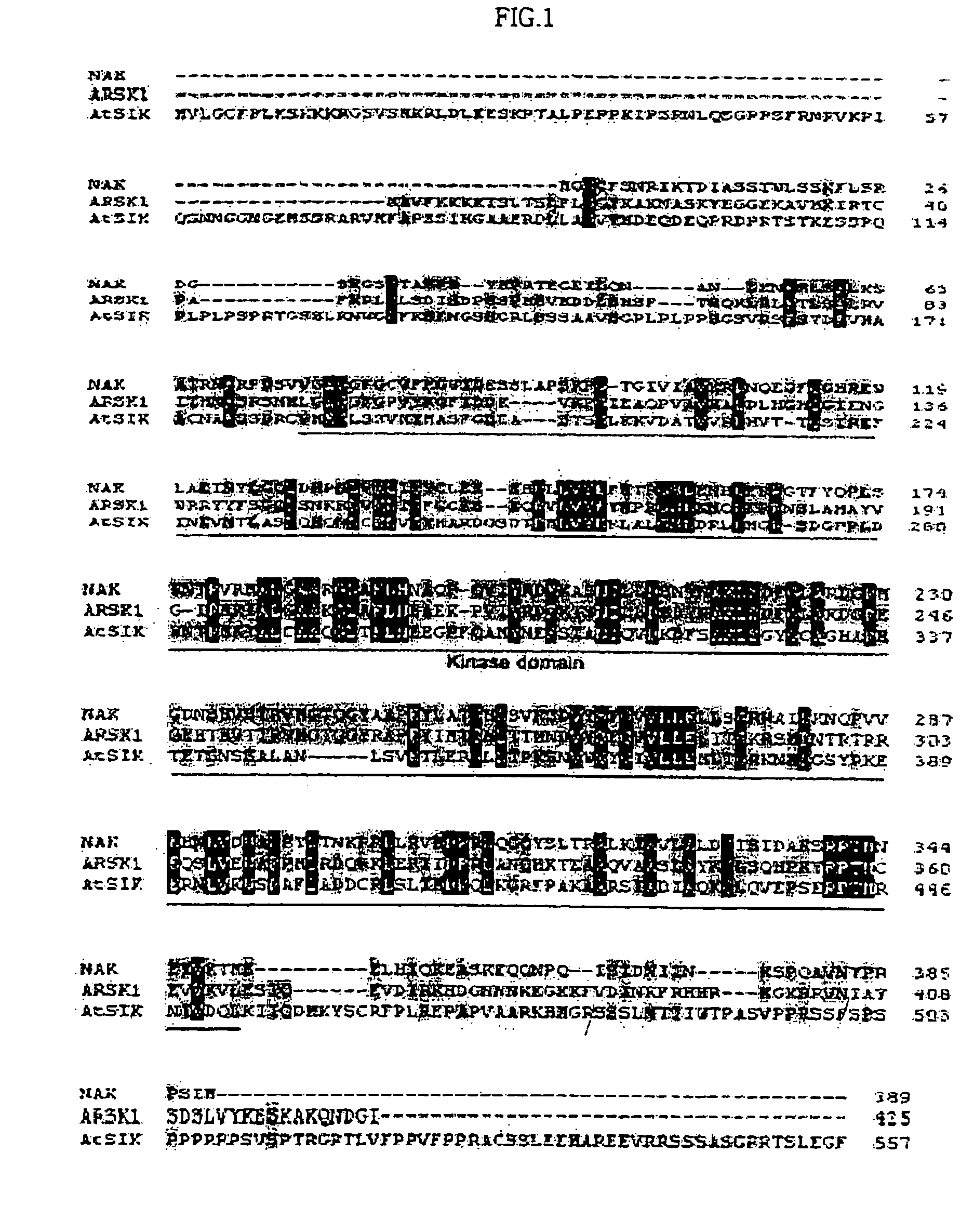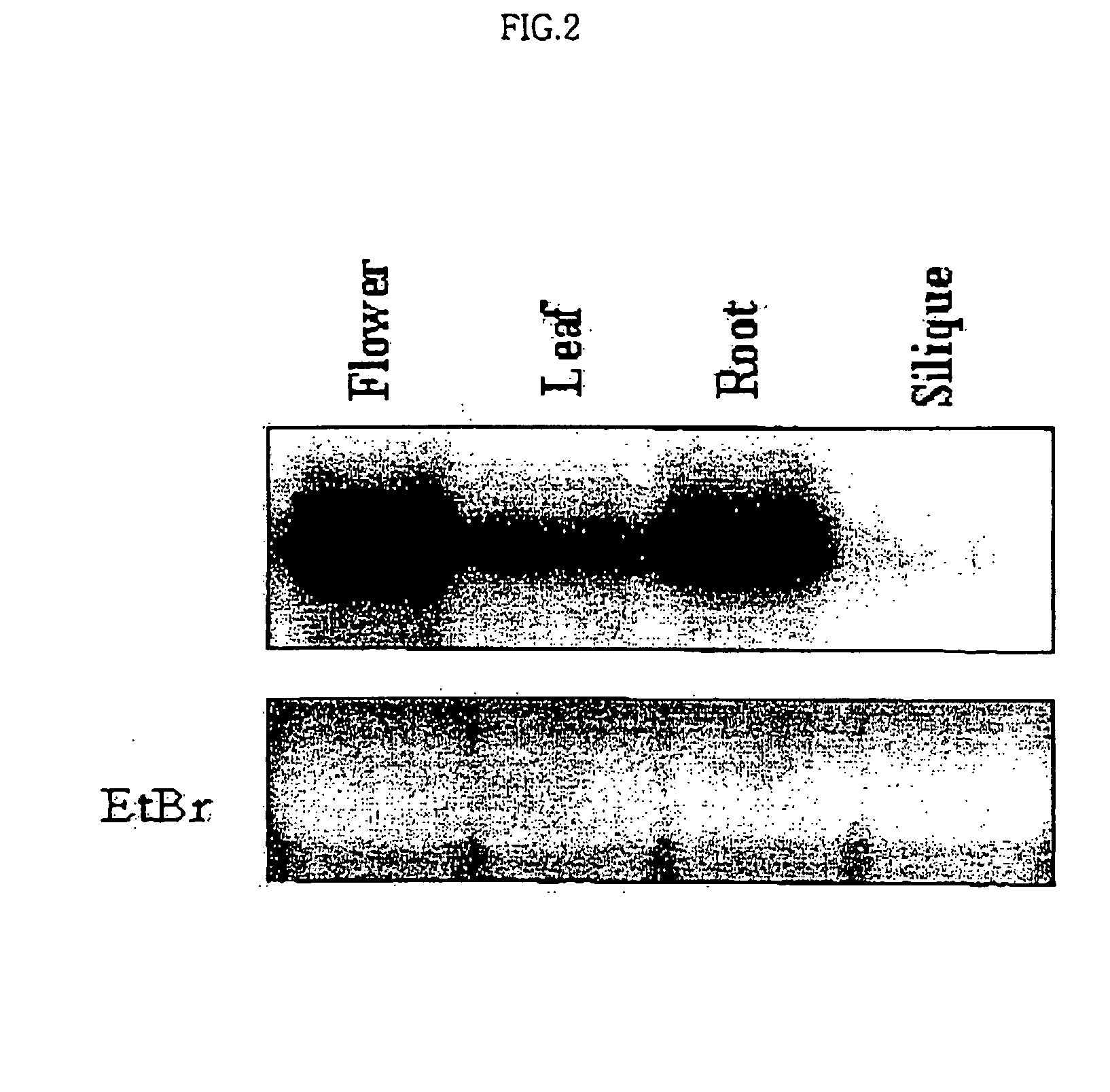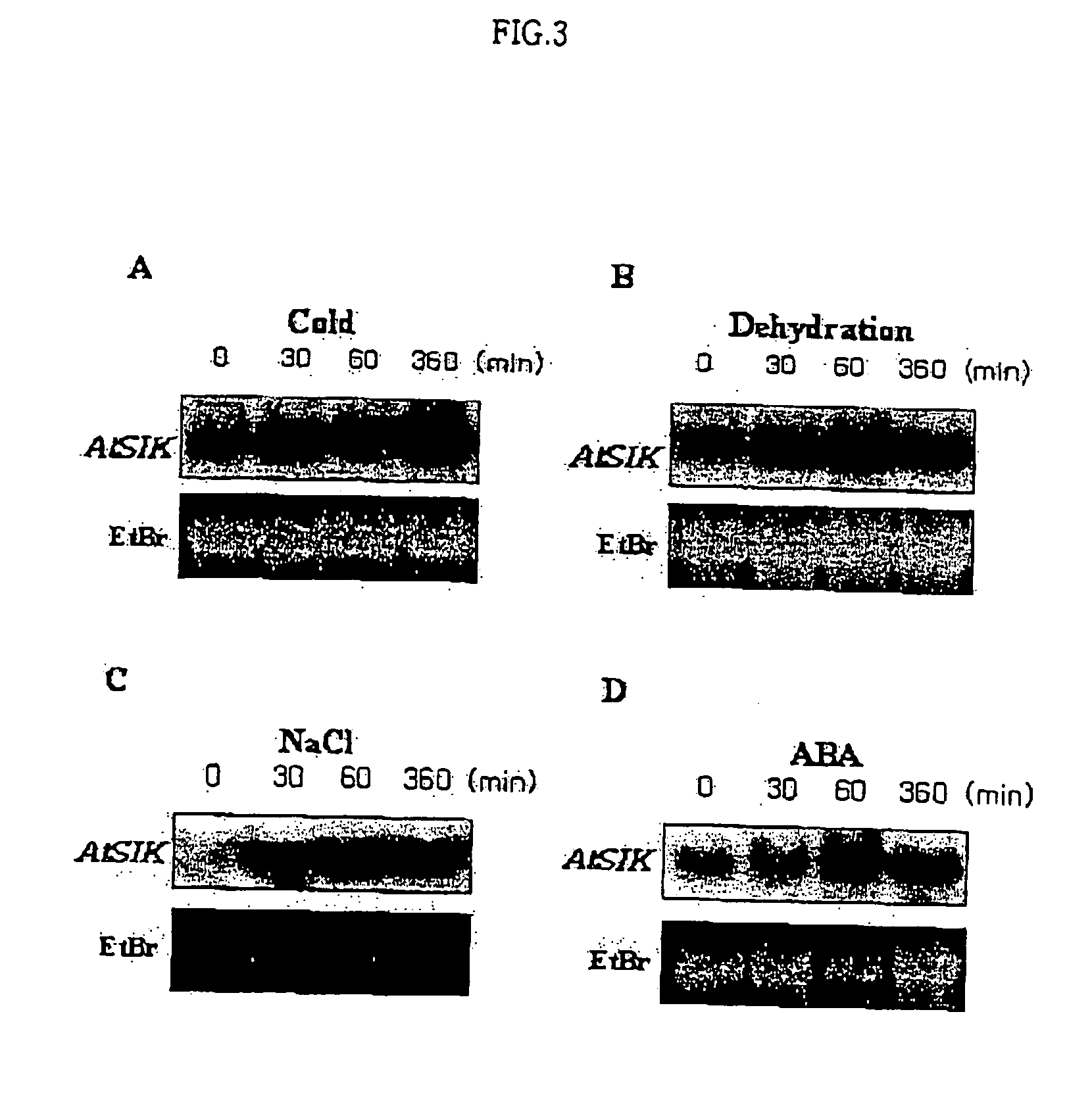Osmotic stress-inducible protein functioning as a negative regulator in osmotic stress signaling pathway of plants
a technology of osmotic stress and protein atsik, which is applied in the direction of peptides, peptide sources, transferases, etc., can solve the problems of unclear identification of genes involved in osmotic stress-induced signaling pathways and signaling mechanisms, and achieve the effect of enhancing the resistance of the plant to osmotic stress
- Summary
- Abstract
- Description
- Claims
- Application Information
AI Technical Summary
Benefits of technology
Problems solved by technology
Method used
Image
Examples
example 1
Cultivation of Arabidopsis thaliana
[0060] All Arabidopsis plants used in experiments of the invention were cultivated in a culture room at 22° C. on Murashige-Skoog (MS) agar plates or a green house controlled to maintain a cycle of 16 hrs light / 8 hrs darkness and 70% relative humidity. For a chemical treatment, in 250 ml culture flasks containing MS liquid media under the conditions of 22° C. and a cycle of 16 hrs light / 8 hrs darkness while stirring at 1000 rpm. The plant tissues of choice were collected and immediately frozen under liquid nitrogen.
example 2
Isolation of Osmotic Stress-Inducible Genes
[0061] To isolate genes whose expressions are induced by osmotic stress, especially, salt stress, a subtraction library was constructed, and then cDNAs were randomly selected from the library and screened by nucleotide sequencing. For the subtraction library, cDNAs derived from plants exposed to salt stress were subjected to hybridization with cDNAs derived from the control plant which was not exposed to salt stress, thereby subtracting the constitutively expressed cDNAs.
[0062] 2-1: Culture of the Arabidopsis Plant
[0063] The Arabidopsis plants were cultured under the same conditions as in Example 1. After 1 week, with the purpose of obtaining stress-inducible cDNAs, the seedlings were exposed to salt stress by exchanging the media with MS media containing 0.15 M NaCl. The seedlings were cultured for an additional 1 to 6 hrs while stirring. All seedlings were immediately frozen and stored at −80° C.
[0064] 2-2: Extraction of RNA and Const...
example 3
Isolation of AtSIK cDNA
[0072] The cDNA clones whose gene expression is regulated according to varying osmotic environment were isolated as described above, for understanding mechanisms of the responses of plants to osmotic stress. Full-length cDNA was isolated from the Arabidopsis cDNA library by employing a new clone OS195 as a probe. The cDNA has a size of 2090 bp with a putative molecular weight of approximately 61 kDa and an open reading frame encoding 557 amino acids. This was named AtSIK (Arabidopsis thaliana Stress-Inducible Kinase). The full-length cDNA was subcloned to pBluescript vector, constructing a recombinant plasmid. E. coli transformed with the said recombinant plasmid was deposited in the Korean Collection for Type Cultures (KCTC) affiliated with the Korea Research Institute of Bioscience and Biotechnology (KRIBB), under deposit No. KCTC 0932BP on Jan. 9, 2001.
[0073] The AtSIK protein has a kinase domain containing 275 amino acids. An amino acid sequence of AtSIK...
PUM
| Property | Measurement | Unit |
|---|---|---|
| temperature | aaaaa | aaaaa |
| pH | aaaaa | aaaaa |
| pH | aaaaa | aaaaa |
Abstract
Description
Claims
Application Information
 Login to View More
Login to View More - R&D
- Intellectual Property
- Life Sciences
- Materials
- Tech Scout
- Unparalleled Data Quality
- Higher Quality Content
- 60% Fewer Hallucinations
Browse by: Latest US Patents, China's latest patents, Technical Efficacy Thesaurus, Application Domain, Technology Topic, Popular Technical Reports.
© 2025 PatSnap. All rights reserved.Legal|Privacy policy|Modern Slavery Act Transparency Statement|Sitemap|About US| Contact US: help@patsnap.com



